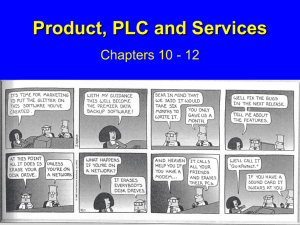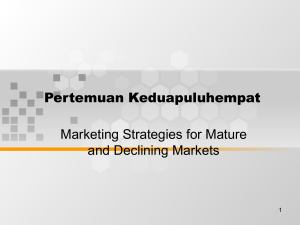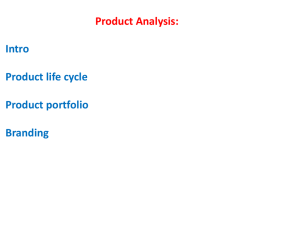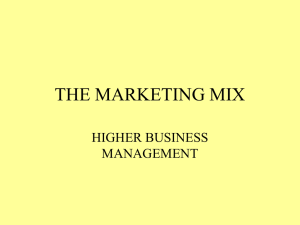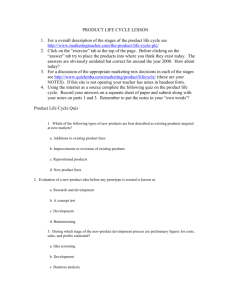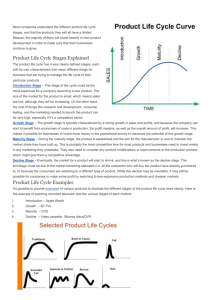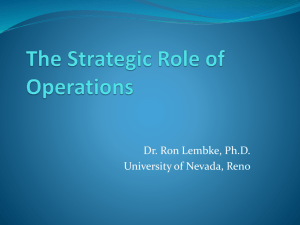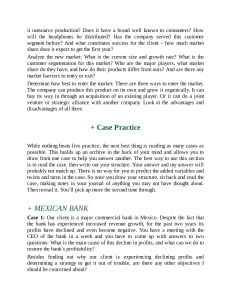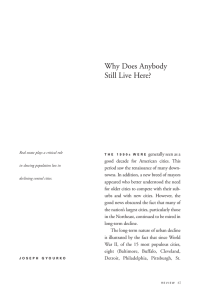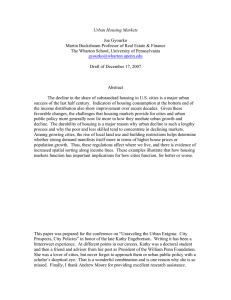Boston Consulting Group Matrix
advertisement
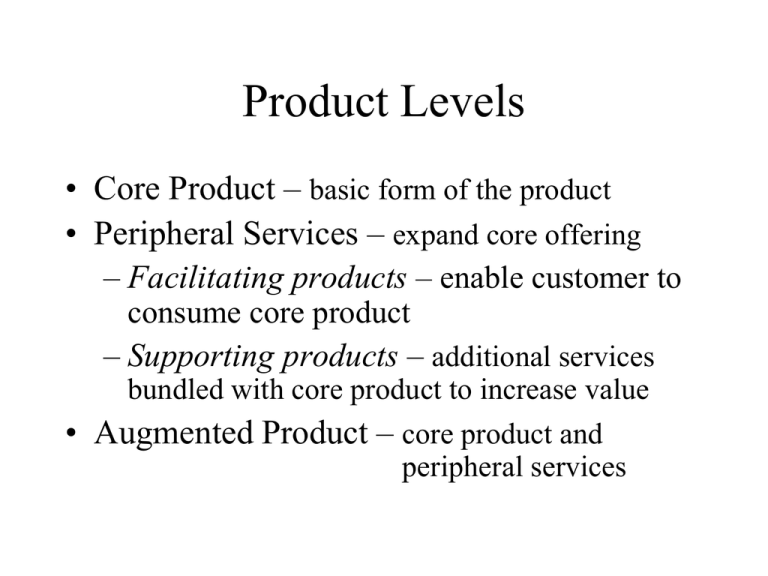
Product Levels • Core Product – basic form of the product • Peripheral Services – expand core offering – Facilitating products – enable customer to consume core product – Supporting products – additional services bundled with core product to increase value • Augmented Product – core product and peripheral services Product Life Cycle • • • • Introduction Stage Growth Stage Maturity Stage Decline Stage Product Life Cycle Sales and Profits ($) Sales Profits Time Introduction Growth Maturity Decline Developing Strategies for the Product Life Cycle 1. 2. 3. 4. Compiling historical data Identifying competitive trends Determining changes in the product-service mix Studying the product life cycles of similar products 5. Projecting sales 6. Locating current position on the life cycle 7. Developing strategies Table 8.1 Characteristics and Strategies for Stages of the Product Life Cycle Stage I Introduction Stage II Growth Stage III Maturity Stage IV Decline Sales Low Rapidly rising Peak Declining Profits Negative Positive and increasing High, starting to decline Declining Cash flow Negligible Moderate High Low Customers Innovators and some early adopters Remaining early adopters and some early majority Remaining early majority and late majority Laggards Competitors Few Increasing in number and strength Many Declining in number Marketing objective Create trial and awareness Increase sales and maximize market share Increase profits and maintain market share Decrease market expenditures and maximize short-term profits Product Core product with some basic peripheral services Minor product changes and extensions Add attributes with positive differentiation Core product and key attributes Distribution Selective Becoming intensive Intensive Selective Price Set initial price based on costs and estimated demand Price to penetrate market based on actual demand Lower price to Increase market share Reduce price to maintain volume Promotion Create trial and awareness through sales promotions Build awareness and Interest and reduce sales promotions Use to differentiate among major competitors Reduce expenditures and focus on loyal customers Characteristics Strategies Extending the Product Life Cycle • Increasing sales to existing customers • Increasing the number of users • Finding new uses Pros and Cons of the PLC • Pros – Use stage to improve marketing planning and strategy development – Encourages firms to be more proactive – Helps firms recognize potential threats and opportunities • Cons – Doesn’t apply to many products and services – May become a selffulfilling prophecy – Hard to determine stage/predict changes – May place too much faith in it; ignore other factors Wheel of Retailing High End Low End Boston Consulting Group Matrix High Star Question Mark Cash Cow Dog Market Growth Rate Low High Low Relative Market Share Menu Sales Mix Analysis Average number sold High Question Marks Item Contribution Margin Stars ($) Cash Cows Average contribution margin Low Dogs High Low Number Sold Conflict between Operations and Marketing • Marketing – Revenue driven – Like variety and options – Evaluated on quotas and revenue • Operations – Cost driven – Like standardization – Evaluated on lowering costs and quality control Avoiding Conflict between Operations and Marketing • Transfer managers across functional areas • Create cross-functional teams • Cross-train associates to perform a wider variety of tasks • Delegate authority to individual units • Institute gain-sharing programs Strategies for Managing Supply and Demand • Modify price • Develop programs to boost volume during non-peak demand periods • Shift demand through reservations • Increase personnel efficiency • Increase customer involvement in selfservice aspects of service delivery © 2010 John Wiley & Sons, Inc.

